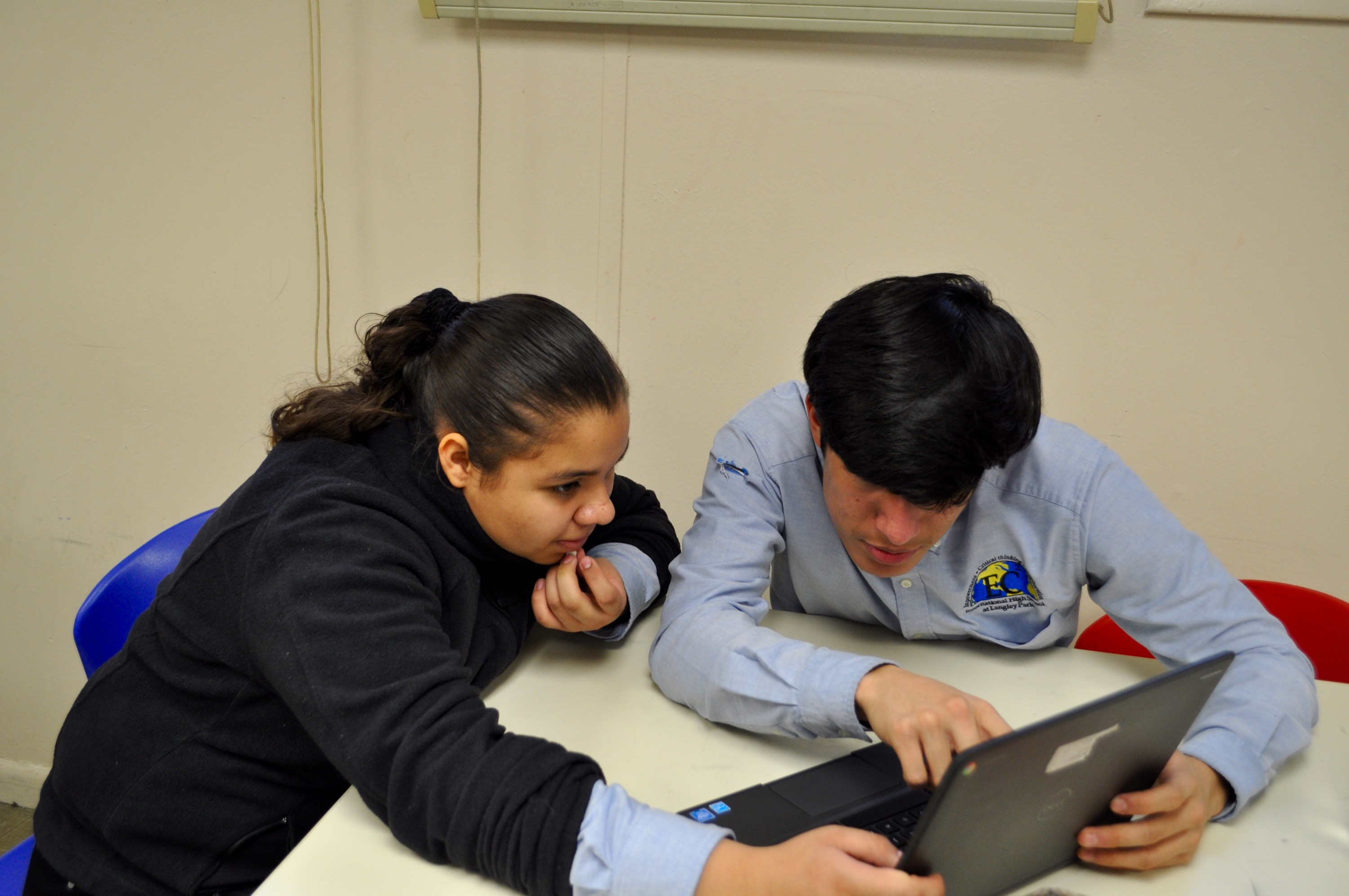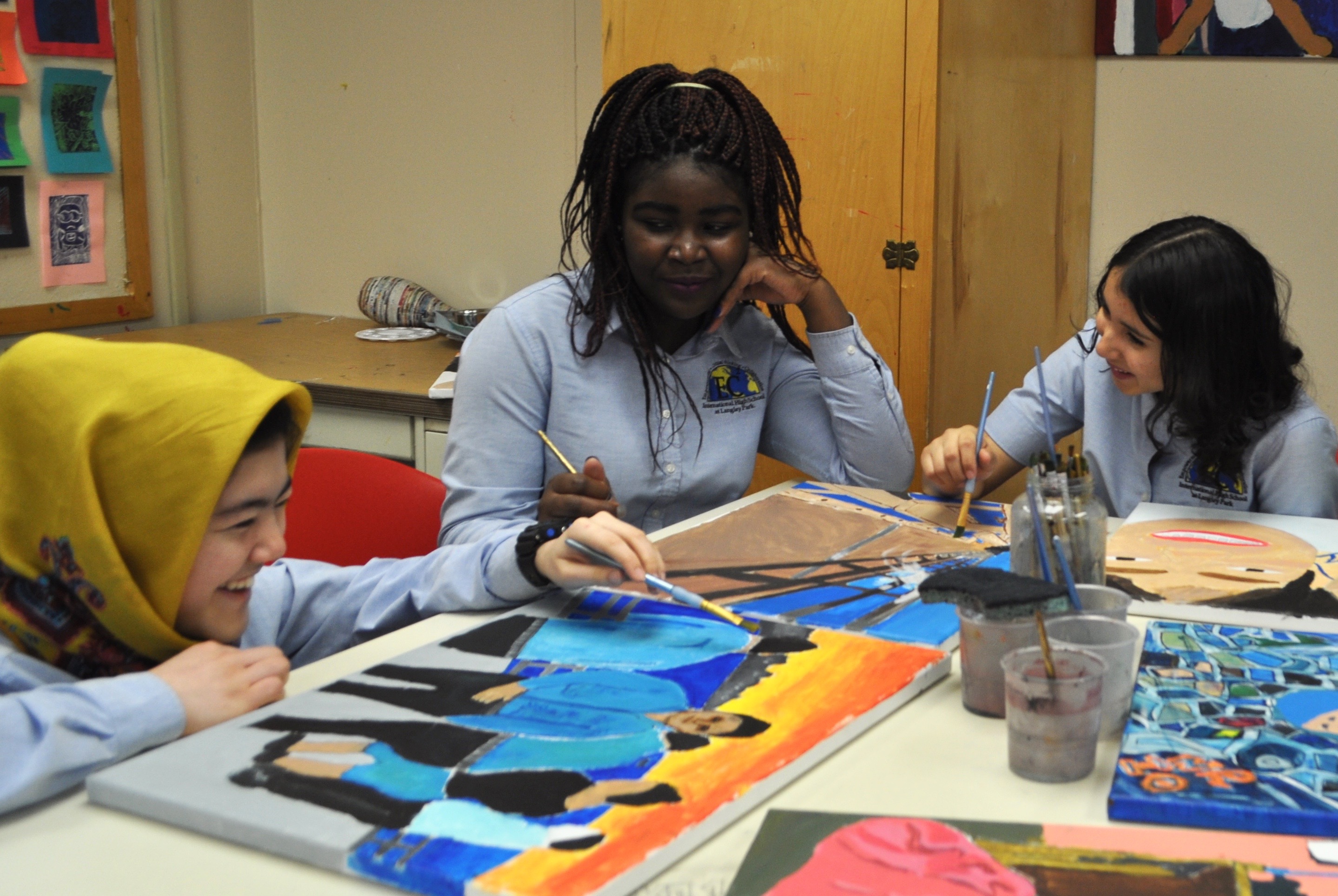
By Carlos Beato, Principal, International High School Langley Park
At International High School Langley Park (IHSLP), we spend a lot of time thinking about how to best serve English Language Learners (ELLs). That’s because 100% of our students are ELLs, and many are recently arrived immigrants. But ELLs aren’t a monolithic group of learners. Each student has his or her own educational journey, and my design team and I are always asking ourselves how we can keep consistent high expectations while tailoring learning experiences to meet each student where they are.
For some students, we need to provide a strong set of supports and scaffolds. But we also need to consider our high achieving students, some of whom no longer require ELL services. With language acquisition no longer a top priority, we need to appropriately phase out the scaffolds they previously needed, and consistently engage and challenge them in their learning. Since a smaller percentage of our students are advanced English speakers, we must make sure that these students’ needs aren’t overlooked. So when I was thinking about shadowing a student to gain a deeper understanding of the student experience at IHSLP, I immediately thought about putting myself in the shoes of a high-achieving English speaker.
I was able to spend a morning with one such student to get a clear picture of how he and his peers are supported throughout his day. Let’s call this student Carlos*. I joined Carlos in his morning classes, starting in a technology class, then physical education, and to wrap up the morning, math. In technology, Carlos was consistently engaged, working through a rubric at his own pace. Physical education was a stimulating experience where all students felt a sense of belonging; there was constantly a role for each student, whether they were new to English or grasping the language at a higher level. I was the most excited to join Carlos in math—my favorite subject. Carlos’s math teacher uses project-based learning to guide the lesson and students progress at their own pace using activity guides. I found the class challenging and was encouraged to see Carlos working at an advanced pace, collaborating with talented a group of peers to solve algebraic equations and inequalities.

It was heartening to see Carlos shine in his classes and demonstrate his capability throughout the morning I spent with him. In shadowing Carlos, I immersed myself as a student—sitting with students, asking questions as a student—all in an effort to more deeply understand the student experience. This allowed me to learn a lot about what is and is not working for our students with advanced English language skills. Here are some of my insights.
- Increasing consistent engagement and transparency of expectations. Carlos was fully engaged in his classes throughout the day, but I saw moments where he could have been pushed or challenged beyond what was made available to him. For example, our mastery-based system is designed to give students ownership over their learning (i.e., teachers provide a rubric of competencies that make expectations and milestones clear and transparent). I assumed that a higher-level English speaking student could easily use the rubric tool to achieve the highest levels of proficiency. But I found disconnects between what it would take for a student to exceed proficiency and the tasks that are offered to them. I saw some tasks that were too heavily scaffolded, keeping students from attaining maximum proficiency. The tasks just weren’t rigorous enough to warrant scores of 4 or 5 on our mastery scale. When scaffolds are so embedded in a task, students may not realize those scaffolds are optional. This reaffirms the need to constantly iterate on our approach to ensure that all students are having a truly personalized experience that is tailored to their pace and language comprehension levels.
- Seeing success with our ACE principles. This year, my team and I implemented a personalized, data-driven approach that we call ACE, which stands for Accelerate, Collaborate, and Engage. We have seen success in engaging our advanced English speakers through the accelerate and collaborate tenets. Students who have mastered the content and are working toward further enrichment can Accelerate. Advanced students can Collaborate with those who need a little more support, helping struggling students master content. I was encouraged to see this tenet in practice when Carlos collaborated in his Physical Education class, working with a fellow student who needed support in devising a set of fitness goals. Seeing this collaboration was inspiring—it helped the student struggling with English acquisition, it empowered the advanced English-speaking student to use his knowledge and skills, and it contributed to our strong school culture of belonging, camaraderie, and peer-to-peer support.
- Designing the upper house experience. Our school opened in Fall 2015 with one hundred 9th graders. This coming fall, those founding 9th graders will begin their third year at the school. Shadowing Carlos, a rising junior, pushed me to think more about how to structure our upper house for juniors and seniors. Creating a strong upper house experience is a chance for our school to re-engage students around a strong personalized learning approach, which has been a major focus of our school design work as well as an implementation challenge. In my time shadowing Carlos, I saw many opportunities for how our upper house experience can give students ownership of their learning and help them build on the skills they gained in their first two years at the school.
- Iterating on and building out a strong college and career strand. Similar to designing a clear and strong upper house experience, shadowing a student has encouraged me to dive into the details around what college and career readiness looks like at IHSLP. This is an area we are continuing to develop, particularly looking at how we advise students in the upper house versus the lower house, and how we advise students with different levels of English ability. It has equipped me to pose necessary questions to my team as we build out learning experiences: What does the college readiness strand look like for our upperclassmen? What does it look like for students throughout their four years with us? Are there gaps? Is it cohesive? And the most important question: How do we get all students to where they want to be when they graduate high school?
- Continuing to prioritize high expectations. High expectations are a foundation of our instructional core. This is true for students at all levels of English acquisition but was made even more prominent in shadowing a high-achieving student. At IHSLP, we are thinking about how best to engage students in AP courses in their third and fourth years with us. This experience has made me more confident that our students are hungry for challenges like this and that our high-achieving students in particular need opportunities—like AP classes—to advance at their own pace, excel in areas of interest, and engage in rigorous material that can prepare them for college and beyond.
Walking in a student’s shoes for a day was energizing. It has underscored for me why it is important that we continue iterating on our school model. My team and I are passionate about serving ELL students at all levels of English acquisition and at all levels of proficiency. To do this well, it is important that we deeply understand the student experience. This understanding is also helpful in better communicating around our school’s identity as a learning community—what our school values and what makes us different. This will be particularly important as we welcome new students every year and expand our community engagement work to best serve all of our students.
*Not the student’s real name.